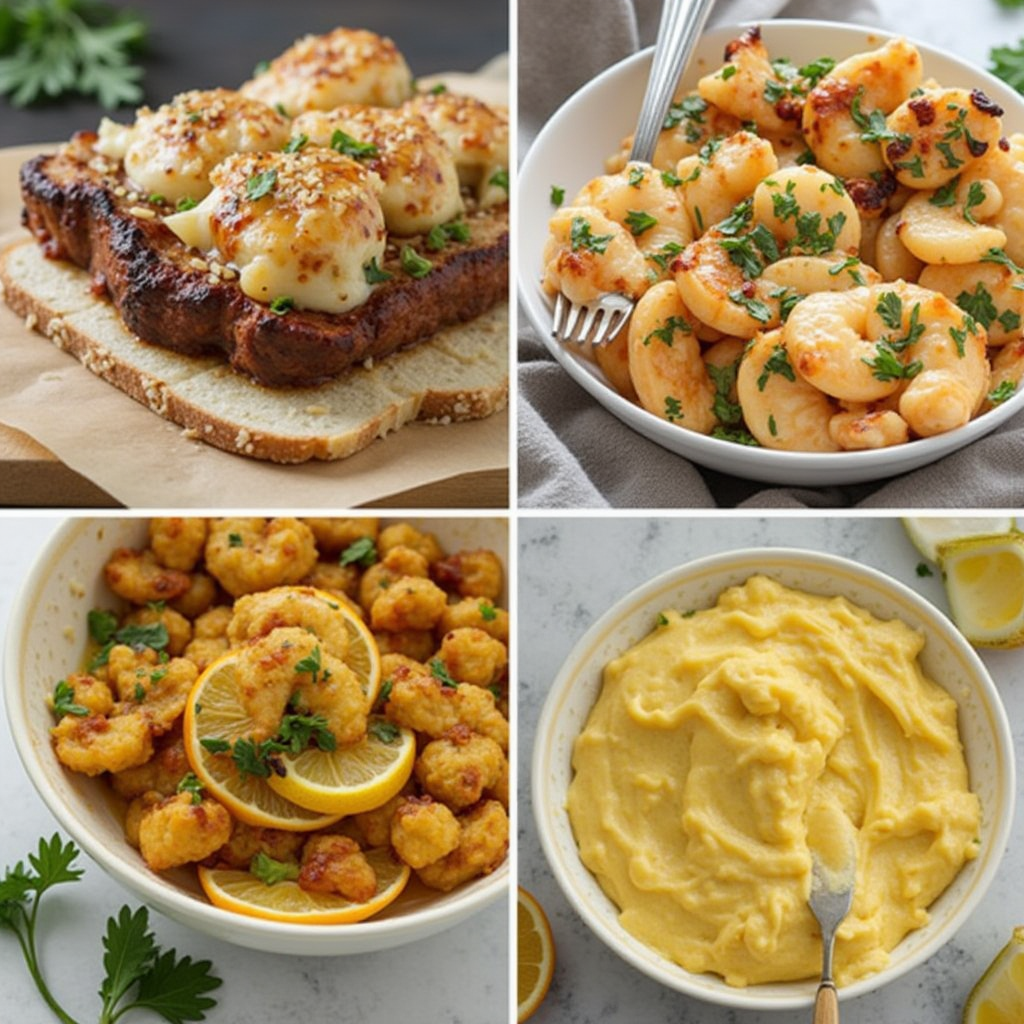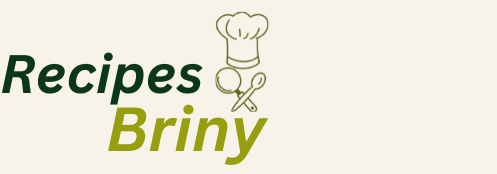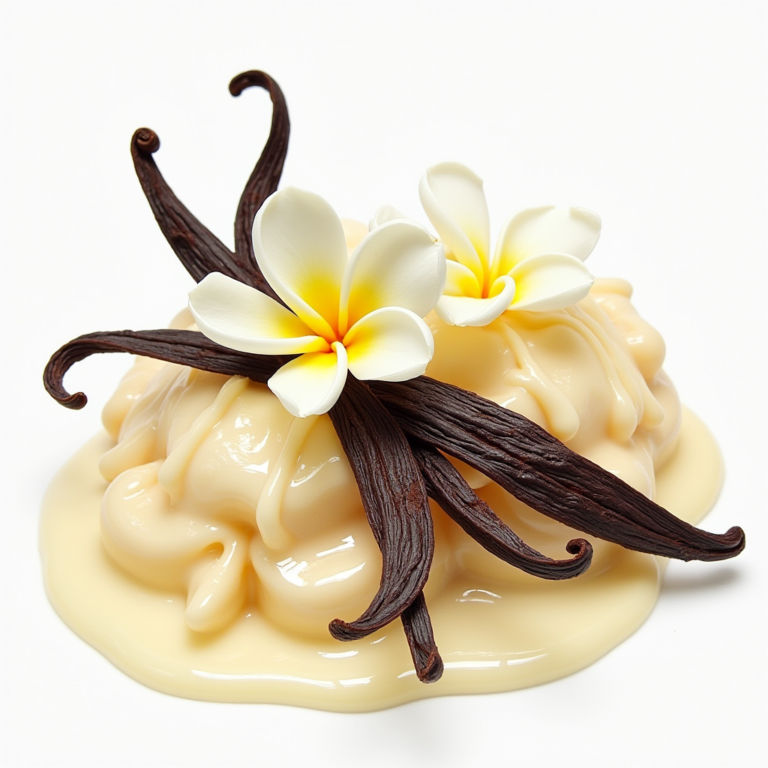Vanilla paste is a game-changing ingredient in the culinary world. Its rich flavor, thick texture, and visible vanilla bean specks add a touch of luxury to sweet and savory dishes alike. Whether you’re a home baker or a professional chef, understanding how to use vanilla paste can transform your cooking. This comprehensive guide explores its benefits, uses, and provides a simple recipe to make your own paste at home.
What is Vanilla Paste?
Vanilla paste is a concentrated product made from vanilla beans, sugar, and a thickening agent like xanthan gum. Unlike vanilla extract, which is a liquid steeped in alcohol, or whole vanilla beans that need to be scraped, vanilla paste offers both convenience and visual appeal. It’s especially popular in recipes like vanilla cookies, where the specks of real vanilla beans enhance both flavor and appearance.
The Composition of Vanilla Paste
Vanilla paste typically contains:
- Vanilla Beans: The primary ingredient, providing the rich flavor and visible specks.
- Sugar: Adds sweetness and helps preserve the paste.
- Thickening Agent: Such as xanthan gum or glycerin, which gives the paste its thick, syrupy consistency.
- Water: Used to achieve the desired consistency.
Why Choose Vanilla Paste?
Vanilla paste is a versatile ingredient that combines the best qualities of vanilla extract and whole vanilla beans. It’s easy to use, provides a robust flavor, and adds a gourmet touch to your dishes with its visible vanilla bean specks.
It’s especially popular in recipes like vanilla cookies, where the specks of real vanilla beans enhance both flavor and appearance.
How is Vanilla Paste Made?
Vanilla paste is created by grinding vanilla beans into a fine powder or paste, then combining them with sugar or syrup and a binder like glycerin or xanthan gum. The result is a thick, syrupy product that delivers the bold taste of vanilla.
The Process of Making Vanilla Paste
- Selecting the Vanilla Beans: High-quality vanilla beans are essential for making a flavorful paste. Madagascar Bourbon vanilla beans are a popular choice due to their rich and creamy flavor.
- Preparing the Beans: The beans are sliced lengthwise, and the seeds are scraped out.
- Blending the Ingredients: The vanilla seeds, sugar, water, and thickener are blended together to create a smooth paste.
- Simmering and Cooling: The mixture is simmered on low heat for a few minutes to meld the flavors, then allowed to cool.
- Storing the Paste: The finished paste is transferred to an airtight container and stored in a cool, dark place or refrigerator.
DIY Vanilla Paste
For those who love DIY projects, making your own vanilla paste at home is simple and rewarding. You can use it in recipes like lemon-blueberry cookies for a delightful twist.
Vanilla Paste vs. Other Vanilla Products
Each vanilla product has its unique benefits, and understanding the differences can help you choose the right one for your recipe.
Vanilla Paste
- Texture: Thick and syrupy with visible vanilla bean specks.
- Best For: Recipes requiring both flavor and a gourmet presentation.
- Examples: Cakes, cookies, custards, and ice creams.
Vanilla Extract
- Texture: Liquid form.
- Best For: Everyday baking like cakes and muffins.
- Examples: Vanilla extract is ideal for recipes where the liquid content won’t affect the outcome.
Whole Vanilla Beans
- Texture: Whole beans that need to be scraped.
- Best For: Premium choice with the freshest flavor, perfect for infusions and custards.
- Examples: Infusing creams, custards, and sauces.
Vanilla Powder
- Texture: Fine powder.
- Best For: Dry mixes and recipes where liquid content needs to be controlled.
- Examples: Dry rubs, spice blends, and dry baking mixes.
Vanilla Sugar
- Texture: Granulated sugar infused with vanilla.
- Best For: Adding a subtle vanilla flavor to baked goods and beverages.
- Examples: Sprinkling on cookies, adding to coffee or tea.
Explore more recipes, check the carrot cake cookies recipe, can be enhance with vanilla.
How to Use Vanilla Paste in Recipes
Vanilla paste is versatile and works well in a variety of recipes, both sweet and savory. Here are some ways to incorporate it into your cooking:
Sweet Applications
- Cakes and Cookies: Enhance your baked goods with the bold flavor of vanilla paste. It’s perfect for recipes like vanilla cookies, where the specks of real vanilla beans add a gourmet touch.
- Custards and Puddings: Add depth and elegance to custards and puddings with visible vanilla bean specks.
- Ice Creams: Create gourmet-style frozen desserts with the rich flavor of vanilla paste.
- Frostings and Glazes: Use vanilla paste to flavor buttercream frostings, glazes, and other sweet toppings.
- Breads and Pastries: Add a touch of vanilla paste to bread dough or pastry cream for a subtle, sweet flavor.
Savory Recipes
- Marinades for Poultry and Seafood: Combine vanilla paste with citrus for a flavorful glaze or marinade.
- Creamy Sauces: A dash of vanilla paste adds complexity to savory sauces, especially those with a creamy base.
- Vegetable Dishes: Enhance the flavor of roasted or glazed vegetables with a hint of vanilla paste.
- Salad Dressings: Add a unique twist to vinaigrettes and creamy dressings with a small amount of vanilla paste.
Pairing Vanilla Paste with Other Flavors
Vanilla paste pairs well with a variety of flavors, enhancing both sweet and savory dishes:
- Citrus: Lemon, orange, and lime complement the sweetness of vanilla.
- Berries: Strawberries, blueberries, and raspberries pair beautifully with vanilla.
- Chocolate: Vanilla enhances the richness of chocolate in desserts.
- Spices: Cinnamon, nutmeg, and cardamom work well with vanilla in both sweet and savory dishes.
- Dairy: Cream, milk, and butter are natural partners for vanilla in custards, ice creams, and baked goods.
For more savory inspirations, you can explore quick dinner ideas for two.

Benefits of Vanilla Paste
Why choose vanilla paste over other vanilla products? Here are some compelling reasons:
- Enhanced Flavor: Vanilla paste is more concentrated than vanilla extract, ensuring a robust and intense vanilla flavor.
- Visual Appeal: The visible specks of vanilla beans make dishes look gourmet and professionally prepared.
- Ease of Use: No need to scrape beans or measure liquid; vanilla paste is ready to use straight from the jar.
- Longer Shelf Life: Compared to fresh vanilla beans, vanilla paste has a longer shelf life, especially when stored properly.
- Versatility: Vanilla paste can be used in a wide range of recipes, from baked goods to savory dishes.
Making Vanilla Paste at Home
Creating vanilla paste at home is simple and allows you to control the quality of the ingredients. Here’s a quick recipe to get you started:
Ingredients
- 8-10 vanilla beans
- ½ cup granulated sugar or honey
- ½ cup water
- 1 teaspoon xanthan gum or glycerin
Instructions
- Prepare the Beans: Slice the vanilla beans lengthwise and scrape out the seeds.
- Blend Ingredients: Combine the vanilla beans, sugar, water, and thickener in a blender.
- Simmer and Cool: Heat the mixture on low heat for 5 minutes, then let it cool.
- Store Properly: Transfer the paste to an airtight container and refrigerate.
Tips for Making Vanilla Paste
- Quality Beans: Use high-quality vanilla beans for the best flavor.
- Consistency: Adjust the amount of water and thickener to achieve your desired consistency.
- Storage: Store the paste in an airtight container in the refrigerator to maintain freshness.
Using Homemade Vanilla Paste
Use your homemade vanilla in desserts like strawberry cheesecake cookies for a burst of flavor. It’s also great in custards, ice creams, and other baked goods.
FAQs About Vanilla Paste
What is Vanilla Paste Used For?
Vanilla paste is versatile and can be used in both sweet and savory dishes. It’s ideal for recipes where you want both the flavor and visual appeal of vanilla bean specks.
Can You Substitute Vanilla Extract with Vanilla Paste?
Yes, you can substitute vanilla extract with vanilla paste. Use an equal amount of vanilla paste, but keep in mind that it offers a stronger flavor and thicker consistency.
How Long Does Vanilla Paste Last?
Store-bought vanilla paste lasts up to two years, while homemade vanilla paste is best used within six months. Proper storage in a cool, dark place or refrigerator will help maintain its quality.
Is Vanilla Paste Better Than Extract?
It depends on the recipe. Vanilla paste is more concentrated and offers visual appeal, making it ideal for recipes where you want to see the vanilla bean specks. Vanilla extract is more convenient for everyday baking.
Where Can I Buy Vanilla Paste?
Vanilla paste is available in most supermarkets and online retailers like Nielsen-Massey and Heilala. You can also find it in specialty food stores.
How to Store Vanilla Paste
To maintain the quality of your vanilla paste:
- Keep it Cool: Store in a cool, dark place or refrigerator.
- Seal Tight: Use airtight containers to prevent air exposure.
- Avoid Contamination: Use clean utensils to scoop out the paste.
Conclusion
Vanilla paste is a versatile ingredient that elevates any recipe, from cookies to custards and even savory dishes. Its rich flavor, thick consistency, and visible bean specks make it a favorite among chefs and home cooks alike. Whether you’re making a simple batch of cookies or a gourmet dessert, vanilla paste can add a touch of luxury to your cooking.
Start experimenting with vanilla today and discover its boundless culinary possibilities. For more inspirations, try pairing it with easy sweet breakfast recipes or other creative dishes.

